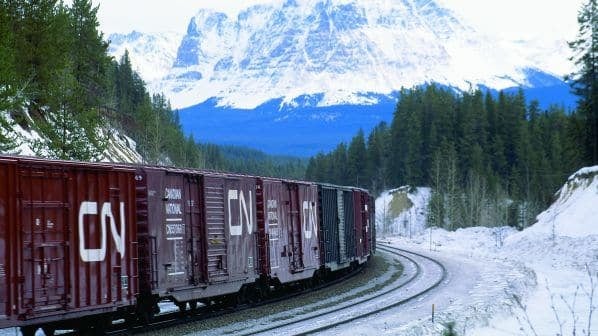CANADA’s government has announced a new funding package to improve the resilience of rail infrastructure following a series of extreme weather events, including floods and fire, that impacted operation in 2021.
Canadian minister of transport, Mr Omar Alghabra, says that up to $C 5.4m ($US 3.9m) will be made available for 20 projects across the country under the Rail Climate Change Adaptation Programme, which aims to support research and development of technologies, tools, and approaches to better identify and reduce climate change risks to rail.
The 20 projects receiving funding are as follows:
- Canadian National (CN) will receive $C 300,000 to carry out a washout hazard risk assessment and monitoring system - primarily in British Columbia. CN will also receive $C 300,000 to fund a ground hazard risk assessment tool to monitor in real time a section of track in British Columbia prone to hazards such as landslides, rockfalls, sinking, erosion and extreme snow and ice.
- Hudson Bay Railway (HBR)/Arctic Gateway Group will receive $C 300,000 to use satellite and drone data to better predict and respond to rail incidents caused by water movement, including blocked culverts and flooding caused by thawing snow and permafrost, primarily in Manitoba. HBR/Arctic Gateway will also receive $C 300,000 to identify and mitigate against climate change impacts on permafrost in Manitoba. This will include using technology such as ground penetrating radar and satellite to measure ballast and substructure conditions.
- Stewart Southern Railway will receive $C 293,600 for the design, manufacture and trial installation of railway sleepers made of recycled plastic, in response to the decreased availability and rising cost of timber sleepers. The plastic sleepers will be installed at various test sites in Saskatchewan to monitor performance in different climate conditions throughout the year.
- Big Sky Rail/Mobilgrain will receive $C 237,217 for bridge erosion mitigation and monitoring using laser scanning and drone and timber condition monitoring, helping identify areas of rot and rates of deterioration due to water runoff and extreme weather, primarily in Saskatchewan.
- Last Mountain Railway will receive $C 241,177, again for bridge erosion mitigation and monitoring in Saskatchewan, and here the likely technological advances may lead to their implementation more widely across Canada.
- Ontario Northland Transportation Commission will receive $C 300,000 for integrating satellite imagery, drone footage and instrumented road-rail truck data into current railway water level monitoring procedures in Ontario to improve their effectiveness.
- Canadian Pacific (CP) will receive $C 230,000 for remote sensor integration into geohazard management in Ontario and British Columbia, helping with the implementation of preventative action and prioritisation of mitigation measures. CP will also receive $C 300,000 to undertake a pilot study to design and test a programme for evaluating climate risks, using climate data and field observations across 2700km of CP’s rail network in British Columbia. In addition, CP will receive $C 260,000 for development of an effective method to monitor track buckling risk in Alberta following maintenance works such as sleeper replacement.
- Tshiuetin Rail Transportation (TSH) will receive $C 300,000 for undertaking a study of hydraulics and hydrology across its entire network in Quebec and in Newfoundland and Labrador. The project will enable TSH to perform a flood risk evaluation of its infrastructure. TSH will also receive $C 300,000 for a fire risk research and elimination programme, including training, along its lines in northern QC.
- Great Western Railway (GWR) will receive $C 249,409 for culvert assessment and replacement with newer and more effective designs across its network, to mitigate the risks that torrential rain and flash flooding periodically post to its lines in southwest Saskatchewan.
- Red Coat Road and Rail will receive $C 249,409 for culvert assessment and replacement in Saskatchewan.
- Northern Lights Rail will receive $C 76,000 for soil stabilisation and replacement of four damaged bridge backwalls at two different sites in Saskatchewan with a combination of traditional rock, timber, geotextile and polyurethane materials, along with monitoring of subsequent erosion for eight to nine months.
- Agawa Canyon Railroad/Watco will receive $C 297,209 for specialised flood monitoring technologies at 10 different sites along a 392km stretch of line in Ontario to give advance warning of water level impact on the trackbed.
- Great Sandhills Rail will receive $C 292,105 to conduct geotechnical assessments and install geotextile technology to stabilise and improve track bed drainage in Saskatchewan.
- Southern Railway of British Columbia will receive $C 298,595 to install water level sensors to enable remote monitoring of river water levels where bridge structures could be threatened.
“Rail is one of the most efficient modes of transporting goods in Canada,” says Alghabra. “To further reduce disruption, keep our supply chains even stronger, and ensure Canadians receive affordable goods on time, we must continue to work to reduce the growing risks and impacts of climate change on Canada's rail sector.”

